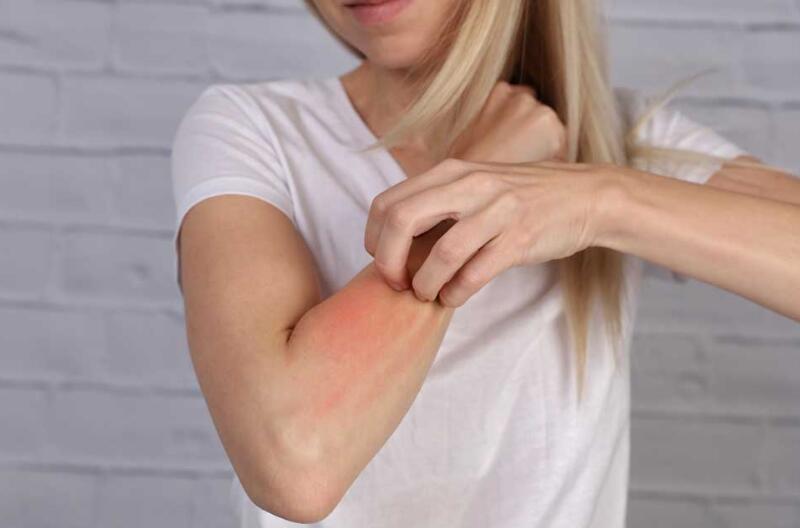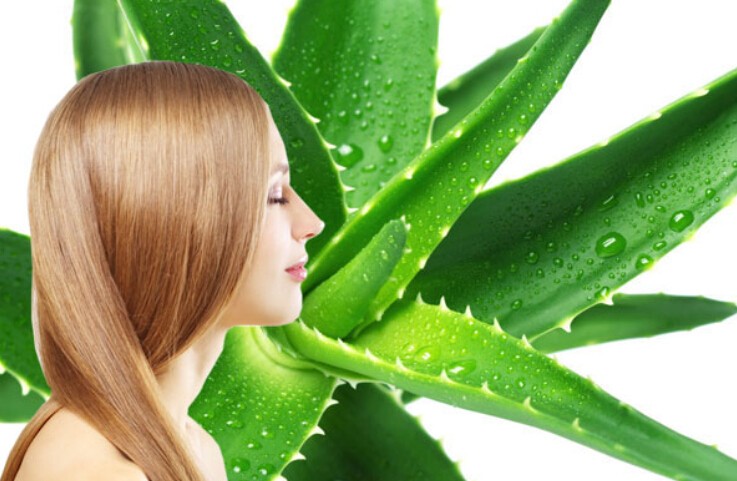Aloe vera is a popular plant known for its healing properties and is commonly used in skincare and health products. However, some individuals may experience allergic reactions to aloe vera. This can cause discomfort and other health issues. This article will explore the causes, symptoms, and management of aloe vera allergy. In addition, we will also provide valuable information to help you better understand this condition.
What is Aloe Vera?
Aloe vera is a succulent plant that belongs to the Asphodelaceae family. It has a long history of medicinal use, dating back centuries. The gel-like substance found in the leaves of the aloe vera plant contains various beneficial compounds, including vitamins, minerals, amino acids, and enzymes. This nutrient-rich gel is known for its moisturizing, healing, and anti-inflammatory properties.
Aloe vera has been used for centuries in various cultures for its medicinal properties. Ancient Egyptians called it the “plant of immortality” and used it to treat burns, wounds, and skin infections. Today, aloe vera is commonly used in cosmetic products, such as moisturizers, soaps, and shampoos.

What is Aloe Vera Allergy?
Allergies occur when the immune system reacts abnormally to an otherwise harmless substance, known as an allergen. In the case of aloe vera allergy, the specific allergens in aloe vera gel can trigger an allergic reaction in susceptible individuals. These allergens include various proteins and enzymes present in the gel.
Certain risk factors may increase the likelihood of developing an aloe vera allergy. These include having a history of other allergies, such as hay fever or asthma, or having sensitive or reactive skin. It’s important to note that while aloe vera allergies are relatively rare, they can still occur.
A study published in the Journal of the European Academy of Dermatology examined the prevalence of contact allergy to aloe vera in over 3,000 patients with suspected contact dermatitis. The study found that approximately 3% of the patients had a positive allergic reaction to aloe vera.
Common Symptoms of Aloe Vera Allergies
Aloe vera allergies can manifest with various symptoms, which can range from mild to severe. Here are some common symptoms associated with aloe vera allergies:
- Skin Reactions: Contact with aloe vera can cause skin reactions in individuals with allergies. Symptoms may include redness, itching, swelling, and a rash. The affected area may become inflamed and irritated.
- Itching and Irritation: One of the primary symptoms of aloe vera allergy is itching and irritation of the skin. This can occur on the area of contact or may spread to other parts of the body.
- Hives: Some individuals may develop hives, which are raised, itchy welts on the skin. Hives can occur in response to an allergic reaction to aloe vera.
- Swelling: Swelling may occur in the area where aloe vera has come into contact with the skin. It can be localized or spread to nearby areas.
- Redness: Allergic reactions to aloe vera can cause redness of the skin, which may be accompanied by warmth and increased sensitivity.
- Burning or Stinging Sensation: In some cases, individuals with aloe vera allergies may experience a burning or stinging sensation on the skin after exposure.
- Respiratory Symptoms: In rare cases, individuals may experience respiratory symptoms if they inhale or ingest aloe vera. This can include coughing, wheezing, or difficulty breathing.
It’s important to note that the severity and specific symptoms of aloe vera allergies can vary from person to person. Some individuals may only experience mild skin reactions, while others may develop more severe symptoms. If you suspect an allergic reaction to aloe vera, it is advisable to consult with a healthcare provider for proper diagnosis and appropriate management of your symptoms.
Types of Aloe Vera Allergic Reactions
Aloe vera allergies can manifest in different ways, depending on the individual and the type of exposure. Here are the types of allergic reactions that can occur due to aloe vera:
1. Contact Dermatitis
Contact dermatitis is the most common type of allergic reaction to aloe vera. It occurs when the skin comes into direct contact with aloe vera gel or products containing aloe vera.
Symptoms of contact dermatitis can include redness, itching, swelling, and a rash. The affected area may become inflamed and irritated, and the reaction is typically localized to the area of contact.
2. Systemic Allergic Reactions
In some cases, individuals may experience systemic allergic reactions to aloe vera. These reactions involve a widespread response throughout the body rather than being limited to the area of contact.
Symptoms can include hives, itching, difficulty breathing, chest tightness, and swelling of the face, lips, or tongue. Systemic allergic reactions to aloe vera are less common but can be severe and potentially life-threatening.
3. Photoallergic Dermatitis
Photoallergic dermatitis is a specific type of allergic reaction that occurs when the allergenic substances in aloe vera react with sunlight. It typically affects areas of the skin that have been exposed to both aloe vera and sunlight.
Symptoms can include redness, itching, burning, and the development of a rash or blisters. This type of reaction can be triggered by topical application of aloe vera gel followed by exposure to sunlight.
It’s important to note that aloe vera allergies are relatively rare, and most people can use aloe vera without experiencing any adverse reactions.
Understanding the Causes of Aloe Vera Allergy
While aloe vera is generally considered safe for most people, several potential causes can contribute to an allergic reaction:
- Botanical Sensitivity: Some individuals may be sensitive to certain compounds found in aloe vera, such as anthraquinones, acemannan, or other plant proteins and enzymes. These compounds can trigger an immune response and lead to an allergic reaction in susceptible individuals.
- Cross-Reactivity: Aloe vera belongs to the Liliaceae family, which also includes plants like garlic, onions, tulips, and lilies. If you have an allergy to any of these plants, you may be more likely to develop an aloe vera allergy due to cross-reactivity between similar plant compounds.
- Additives and Preservatives: Many commercial aloe vera products contain additives, preservatives, or other ingredients that can potentially cause allergic reactions in some individuals. These additives may include fragrances, dyes, or stabilizers.
- Latex Allergy: Aloe vera contains latex-like compounds, which can trigger an allergic response in people with a latex allergy or sensitivity.
- Genetic Predisposition: Some individuals may have a genetic predisposition to developing allergies, making them more susceptible to reacting to substances like aloe vera, even if they have no prior history of allergies.
- Environmental Factors: Exposure to certain environmental factors, such as pollution, stress, or other allergens, can potentially increase the risk of developing an aloe vera allergy or exacerbate existing allergic reactions.
Diagnosis of Aloe Vera Allergy
If you suspect that you have an aloe vera allergy, it’s essential to seek a professional diagnosis from a healthcare provider or allergist. They will perform a thorough evaluation, which may include a detailed medical history, a physical examination, and allergy tests.
Skin patch tests are commonly used to diagnose aloe vera allergies. During this test, small amounts of aloe vera extract are applied to the skin and covered with patches. The patches are left on the skin for a specific period, typically 48 to 72 hours, to determine if an allergic reaction occurs.
Other diagnostic methods, such as blood tests or elimination diets, may be used in certain cases to confirm the presence of an aloe vera allergy. These diagnostic methods can help healthcare providers accurately identify the specific allergens causing the allergic reaction.

How to Manage and Treat Aloe Vera Allergy?
If you have been diagnosed with aloe vera allergy, there are several steps you can take to manage and treat your symptoms effectively. Here are some strategies for managing and treating aloe vera allergy:
1. Avoid Aloe Vera Exposure
The most important step in managing aloe vera allergy is to avoid further exposure to aloe vera and any products containing aloe vera gel. Read product labels carefully to identify aloe vera as an ingredient. Opt for alternative products that do not contain aloe vera.
2. Topical Symptom Relief
For mild allergic reactions, over-the-counter remedies such as antihistamine creams or topical corticosteroids can help alleviate symptoms such as itching, redness, and inflammation. These products can be applied directly to the affected area as directed by the manufacturer or your healthcare provider.
3. Oral Antihistamines
Oral antihistamines can provide relief for systemic allergic reactions or more severe symptoms. These medications help reduce itching, sneezing, and other allergic response symptoms. You need to consult with your healthcare provider to determine which oral antihistamine is most suitable for you.
4. Alternative Skincare Products
Finding safe substitutes for skincare and cosmetic products that do not contain aloe vera is essential. Look for labels that explicitly state “aloe vera-free” or opt for natural and organic products that do not include aloe vera as an ingredient. Be sure to read the ingredient list carefully to ensure aloe vera is not present.
5. Allergy Identification
You can consider wearing a medical alert bracelet or carrying an allergy identification card that indicates your aloe vera allergy. This can help ensure that others are aware of your allergy in case of an emergency and can provide appropriate care promptly.
Other Ways to Treat Skin Allergies Naturally
In addition to traditional medical treatments, several natural remedies may help alleviate allergy symptoms. Here are some alternative ways to treat allergies naturally:
1. Quercetin
Quercetin is a natural flavonoid found in fruits and vegetables that has anti-inflammatory and antihistamine properties. It may help reduce allergy symptoms by stabilizing mast cells and inhibiting the release of histamine. Quercetin-rich foods include apples, berries, onions, and leafy greens. Supplements are also available but consult with a healthcare provider before starting any new supplement.
2. Probiotics
Probiotics are beneficial bacteria that promote a healthy gut microbiome. Some studies suggest that certain strains of probiotics may help modulate the immune system and reduce allergy symptoms. Consuming probiotic-rich foods like yogurt, kefir, sauerkraut, and kimchi or taking probiotic supplements may be beneficial.
3. Stinging Nettle
Stinging nettle is a plant that has traditionally been used to treat allergy symptoms. It contains compounds that may block the production of inflammatory chemicals, potentially reducing symptoms like sneezing and itching. Stinging nettle can be taken as a supplement, brewed into tea, or used topically in the form of creams or gels.
4. Nasal Irrigation
Nasal irrigation, using a saline solution or a neti pot, can help flush out allergens and relieve nasal congestion. It can be particularly beneficial for managing allergic rhinitis symptoms. Make sure to use distilled or sterilized water and follow proper nasal irrigation techniques to avoid any potential risks.
5. Acupuncture
Acupuncture, a traditional Chinese medicine practice, involves the insertion of thin needles at specific points on the body. Some studies suggest that acupuncture may help alleviate allergy symptoms by modulating immune responses and reducing inflammation. However, more research is needed to fully understand its effectiveness for allergies.
When to See a Doctor?
It is important to seek medical attention from a healthcare provider if you experience any of the following symptoms related to aloe vera allergy:
Severe skin reactions: If you develop a severe rash, blistering, or swelling, it is important to see a doctor. This may indicate a more severe allergic reaction that requires medical intervention.
Difficulty breathing: If you experience difficulty breathing, shortness of breath, wheezing, or chest tightness after exposure to aloe vera, it could be a sign of a systemic allergic reaction. Seek immediate medical attention as this can be a life-threatening emergency.
Swelling of the face, lips, or tongue: Swelling of the face, lips, or tongue can indicate a severe allergic reaction known as angioedema. This requires immediate medical attention to prevent further complications.
Persistent or worsening symptoms: If your symptoms persist or worsen despite self-care measures or over-the-counter remedies, it is advisable to consult a healthcare provider. They can assess your condition, provide a proper diagnosis, and recommend appropriate treatment options.
Generalized allergic symptoms: If you experience symptoms such as hives, itching, or generalized redness after exposure to aloe vera, it is important to consult a doctor. These symptoms may indicate an allergic reaction that requires medical evaluation and management.






